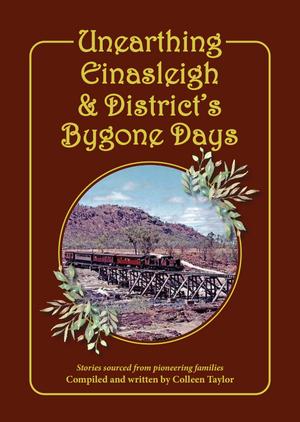
5 minute read
CroydonShire

Croydon Shire Council’s Heritage Festival is nearly upon us. The annual event will kick off on Saturday 17 June with a 1920s-themed dance at the 19th century-built Town Hall. Locals and visitors are invited to channel their inner Great Gatsby and enjoy music by Cairns-based duo, Dusty Haven. Sunday morning will see market stalls in Anzac Park expect locally baked treats, jams and chutneys, and fundraising stalls for our local charities. During the week guided tours will be on offer and everyone will have a chance to follow clues to several secret locations to win gold coins. Kids will participate in an educational scavenger hunt.
Advertisement
We’ll close out by Dancing with the Stars at the Rodeo Ground on Saturday 24 June: the ‘stars’ being all those millions of points of light that decorate our Outback sky! Night Sky Secrets will be on-hand with telescopes and answers about the visible universe while Cassady Connection provides the tunes Stay up to date via the Croydon Shire Council website and Facebook page Those who can’t make it this year can confidently put future Croydon Heritage Festivals in their calendars for the final week of the school term before the June holidays each year
GREATCARPENTERBEEXylocopaaruana

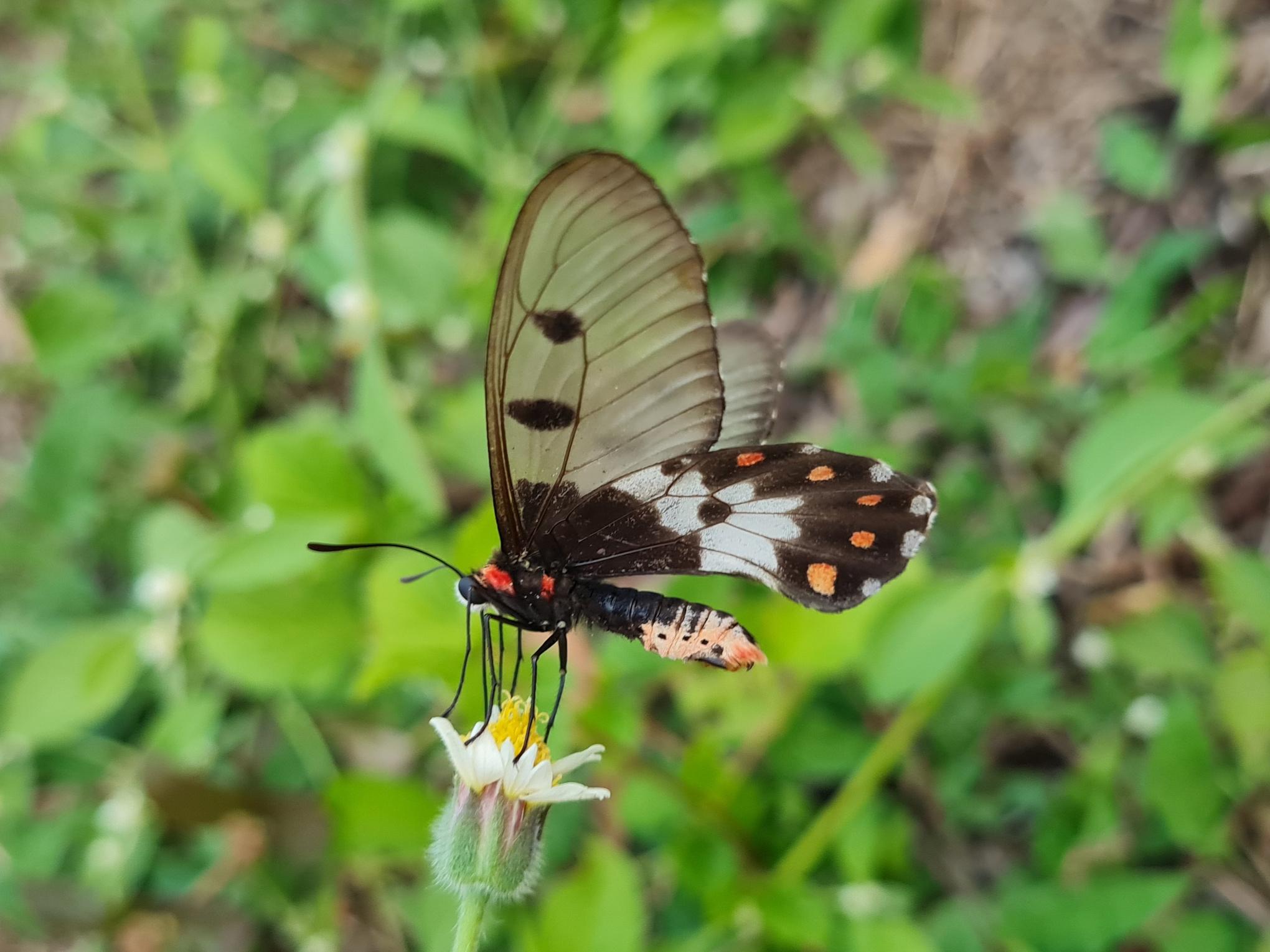
These charismatic bees are the largest species in Australia at 15-24mm long Females flaunt bright yellow thorax hairs contrasted with glossy black hairs elsewhere and males are adorned completely in golden hairs They excavate burrows in timber earning them their name and are excellent buzz pollinators of native plants, as well as tomatoes and eggplants. They are distributed across northern and eastern Queensland, New South Wales, Northern Territory and Western Australia.

Blue-banded bees boast shimmering bands of blue on their thoraxes (some species have green, white or orange bands). Females build nests in soft mortar, mudbricks or soft sandstone banks and leave a mixture of nectar and pollen in each cell before depositing an egg Male bees roost in small groups at night, clinging to stems with their mandibles They pollinate both native flowers and garden favourites like chilli, basil and tomatoes
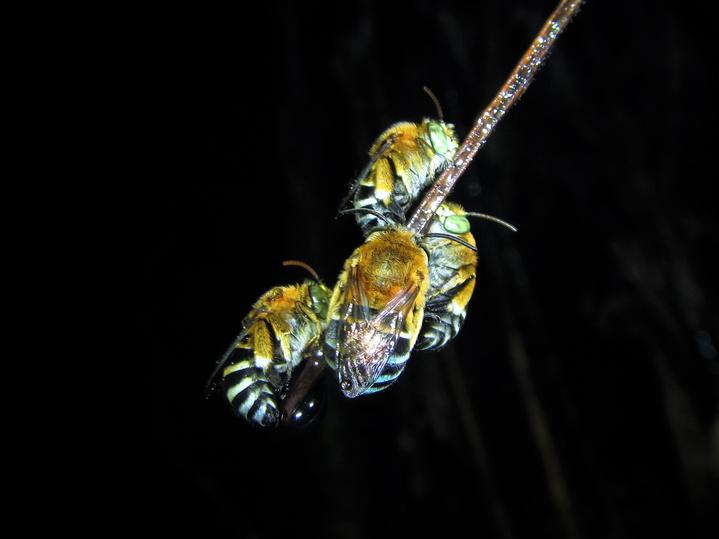
Stingless bees from the genus Tetragonula are highly social, living in colonies and working together to carry out different tasks including mass provisioning of food, cleaning, nest defence and corpse removal They nest in tree hollows and crevices and can commonly be found in the walls of buildings Stingless bees can be domesticated and have been found to increase crop yield of macadamia, mango, avocado, lychee, blueberry and strawberry
MASON BEELithurgusatratus
The name ‘Lithurgus’ comes from the Greek word ‘lithos’, meaning stone. These bees are solitary and excavate burrows in rotting wood. They form part of the Megachilidae group of bees, one of the largest genera of bees. They are classified as ‘long-tongued’ bees and visit large flowers that produce coarse pollen such as Ipomoea, Alygogyne and Hibiscus
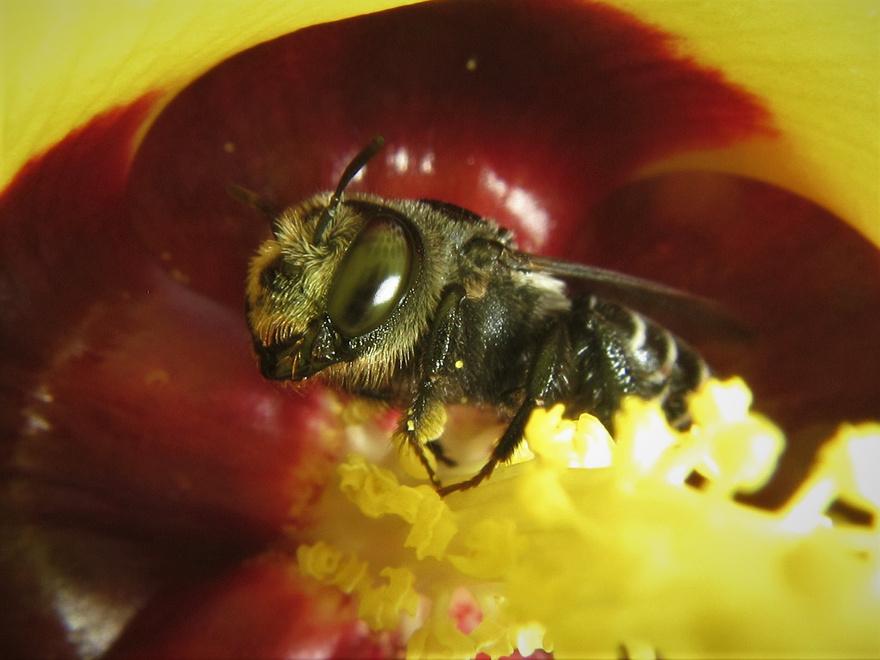
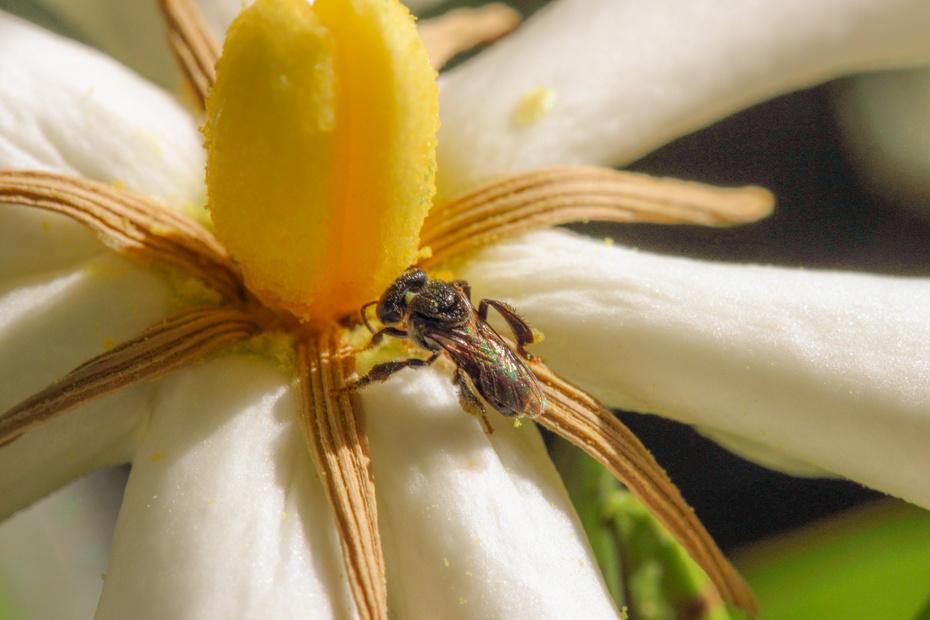
CLEARWINGSWALLOWTAIL CressidaCressida
Unlike most butterflies, the clearwing swallowtail has very few scales giving their wings a transparent appearance Caterpillars feed on poisonous vines (Aristolochia spp.) making them unpalatable to predators through to adulthood. Adult males sport red and black markings while the female has few markings. Males also have a wider wingspan than females, an unusual trait in butterflies. Adults sip on nectar and pollinate plant species such as Grevilleas.

In the tropical savannahs of northern Queensland, the grasslands are home to a rare and brightly coloured jewel of a bird: Psephotellus chrysopterygius, better known as the Goldenshouldered Parrot.
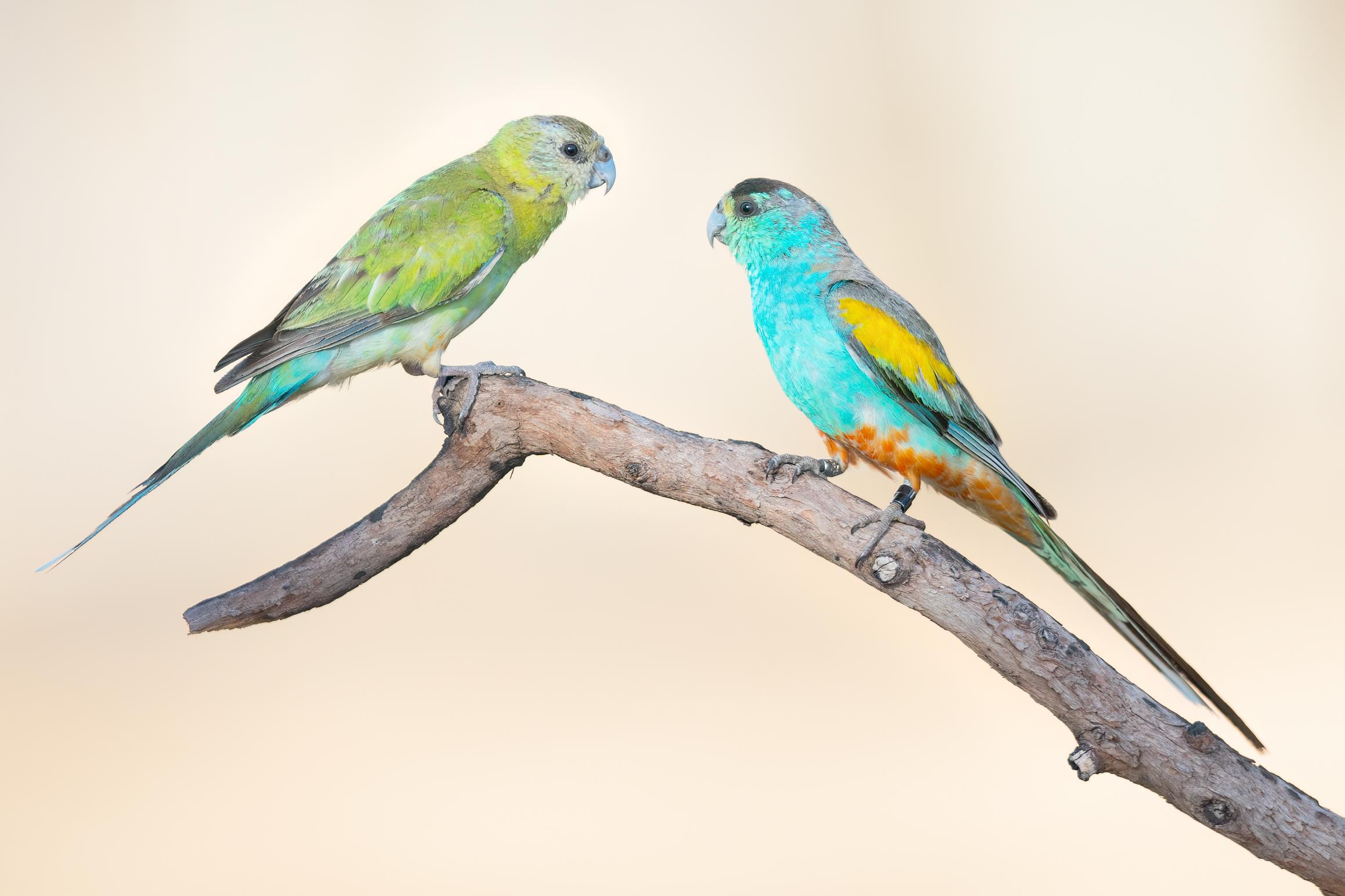
Recognisable from their dazzling feathers (males are turquoise and orange with a black crown and bright yellow shoulders, while females are green and turquoise), this bird is endemic to the region meaning it is found nowhere else in the world and is an important totem for First Nations Peoples
In the 1980s, a population of Golden-shouldered Parrots was discovered in the area south-west and east of Musgrave in the headwaters of the
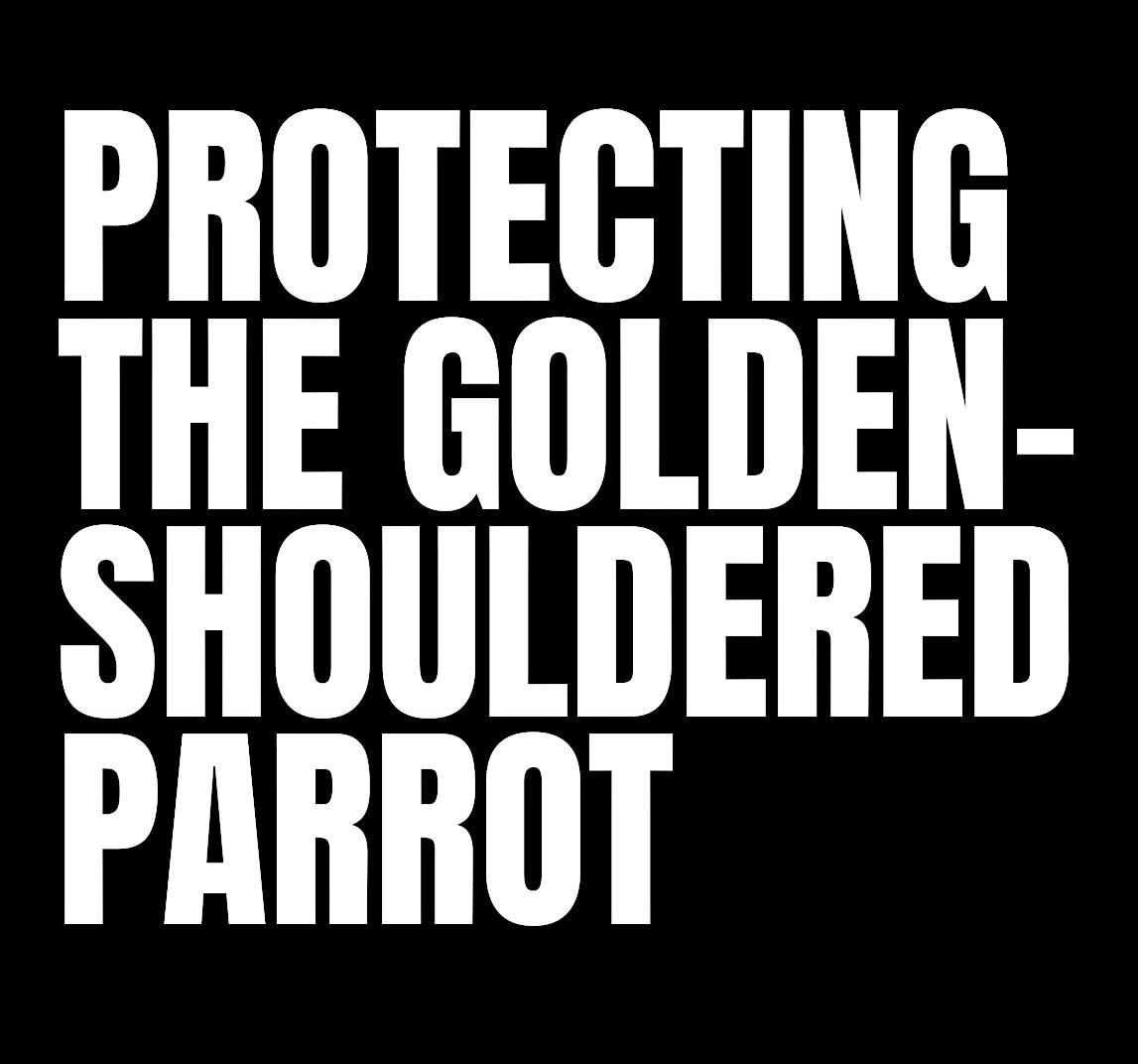
Morehead River. The Morehead River population is believed to occupy an area of 1380km² however, by the late 1990s the size of this habitat was already shrinking. By 2009, the Morehead River population was estimated to be only 1,500 mature individuals, and more recent evidence (circa. 2016 suggests this number has declined further
In the 1990s, Queensland Parks and Wildlife Service rangers discovered a second popul-ation in Staaten River National Park and the adjacent Bulimba Sta-tion, about 100
Indigenous Peoples having distinct language names for the species. The parrot’s distribution has contracted since the species was first collected for science by Elsey, east of Normanton, in 1856.
In fact, its population size and distribution have contracted so severely that it is recognised as an Endangered species at state, national and international levels.
Threats to the golden-shouldered parrot include: woody thickening, particularly the broad-leaf tea-tree predation by cats, goannas and butcherbirds grazing by both cattle and feral pigs changed fire regimes changes to food resources the loss of termite mounds by feral pigs that parrots use for nesting kilometres west of Chillagoe. The Staaten population is constrained to an area of approximately 300km² and is estimated to contain approximately 1,000 mature individuals. While regular Golden-shouldered Parrot sightings are made from areas outside of their range, they remain unconfirmed, and the most optimistic total population estimate is 2,500 mature individuals

Since 2019, efforts to save this species have been lead by a dedicated Golden shoulder parrot recovery team. Gulf Savannah NRM has partnered with Traditional Custodians, Cape York NRM, Bush Heritage, Artemis Nature Fund and ecologists Steve Murphy and Gaye Crowley to try and protect Golden-shouldered Parrot habitat in the Cape, and the Staaten and Mitchell catchments of the Gulf Savannah.
Indigenous Knowledge holds that the parrot traditionally had a continuous distribution through much of Cape York Peninsula, with at least four
This work has included efforts to increase best practice habitat management, including an Indigenous fire forum on traditional burning at Talaroo Station (2019) and another fire forum in Mt Surprise to help landholders reduce woody thick-kening (2020) Gulf Savannah NRM has also contributed to a CSIRO pilot study, to determine the feasibility of using remote sensing technologies to identify and locate potential nesting sites
Gulf Savannah NRM conducted surveys in 2019 to estimate the density of Golden-shouldered Parrot nests and population size at Staaten National Park. We have also supported Wakaman Traditional Custodians from the Chillagoe district to complete a nest survey in 2022 and two habitat suitability ground-truthing surveys in 2023, as part of their Healthy Country Plan.
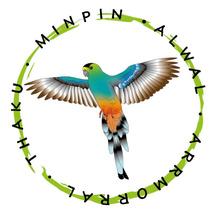

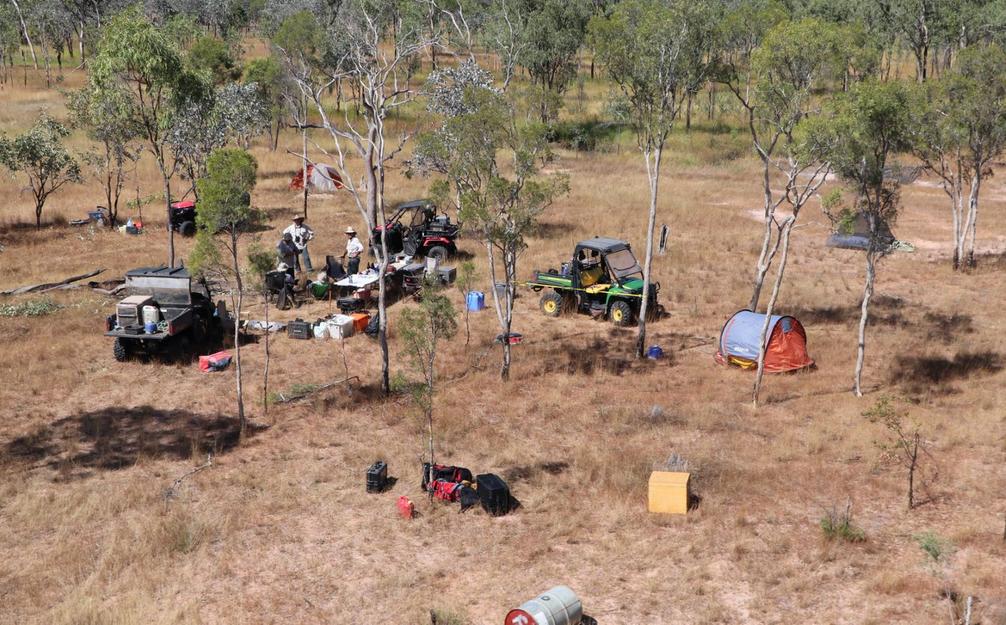
Through the recovery team, on-ground works to protect the birds has included reducing weeds and woody thickening, while maintaining healthy grass habitats; fencing cattle and pigs out of sensitive grasslands known to provide habitat and managing weeds and pests which pose a threat to the parrot.
There have been several research projects to better understand how to protect this species. Two of the main predators of the golden shouldered parrot are butcher birds and feral cats. Both species have been tracked with GPS to better understand their predatory behaviour.
Vegetation thickening is one of the key factors identified as causing the decline of the Goldenshouldered Parrot, as dense vegetation increases the hunting success of these predators
Understanding how much woody thickening has occurred is an important part of understanding how to save the parrot and has been the focus of much research effort Mechanical methods for removing woody thickening have been trialled as part of the conservation efforts.
This project is supported by Gulf Savannah NRM, through funding from the Australian Government’s National Landcare Program
UnearthingEinasleigh&District'sBygoneDays COLLEEN TAYLOR

Local author Colleen Taylor is publishing a new book featuring heart-warming stories from the pioneering families of the Einasleigh region, personally told by the Golden Oldies or relayed by their descendants. Mayor Barry Hughes (Etheridge Shire Council) will officially launch the book's publication at 'Christmas in July' at Einasleigh Park under the Memorial Tree on 29 July 2023. You can buy a copy of the book by contacting Colleen on 0474 035 111.
